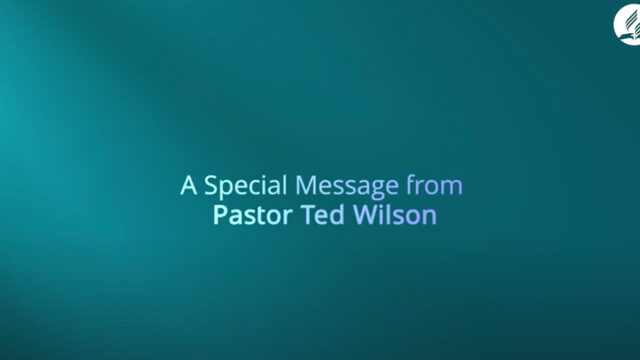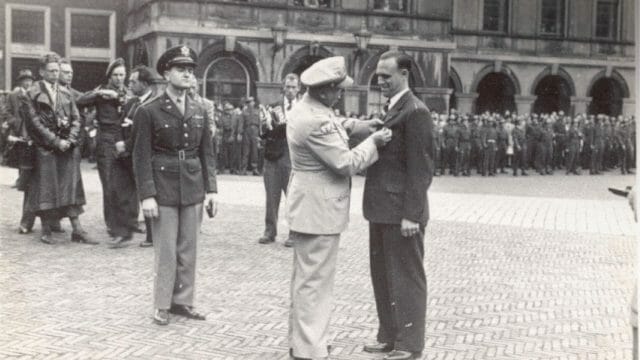Learning to “stomp twice”

In the summer of 1992 my wife was the director of the early childhood center at our Adventist school in Wenatchee, Washington. I had graduated from Walla Walla University with my degree in theology, and was invited to serve as a youth pastor for that summer at the Wenatchee Seventh-day Adventist Church. The invitation came with one condition—I had to learn to drive a school bus and pass both the written and driving tests to get my commercial driver’s license. I soon had a Jonah-like experience, being swallowed by a yellow “behemoth whale”—a school bus.
As I recall, this was a 1965 C-180 series school bus made by the Gillig Brothers and had a seating capacity of 52 passengers. It had air brakes and a Fuller RT610 10-speed manual transmission. And it had a double clutch. What is that? Well, when you drive a vehicle with a manual transmission, your left foot is used to push in the clutch to change gears. If the vehicle has a double clutch, you must press the clutch in twice to shift gears. Why twice? The first time to transition out of one gear, and then the second to engage the next gear. Learning to drive the bus around town and coming to stoplights was an aerobic exercise. It felt very unnatural for me, but over that summer I developed the stomp-twice reflex! And I passed my driving test!
The Call to Care and Involve
Christ called His disciples to learn to “stomp twice” by seeing the possibilities of all people, including individuals with disabilities and the marginalized.
The disciples had preconceived expectations about what the ministry of Jesus should be. These expectations collided with Christ’s call to care for others and to involve them in God’s work. The disciples had to learn to “stomp twice” to develop their faith. The first stomp was to disengage their notions of what God’s kingdom consisted of and to understand the true priorities of the kingdom of God. This was not natural for Peter, James, or John. While Jesus was clear about His mission and how it involved individuals with possibilities, the disciples were confused, as seen in John 9:1-3:
“Now as Jesus passed by, He saw a man who was blind from birth. And His disciples asked Him, saying, ‘Rabbi, who sinned, this man or his parents, that he was born blind?’ Jesus answered, ‘Neither this man nor his parents sinned, but that the works of God should be revealed in him.’ ”
Jesus modeled, for His disciples, a different way of seeing people. Rather than focus on this man’s disability, Christ saw the potential of how this man could be a witness of God’s grace in action. Jesus confronted the disciples’ misguided theology concerning disabilities, and helped them to see the possibilities. He helped His disciples develop their faith reflexes and disengage from this stigma.
A Test of Character
In Matthew 25:31-46 we see the clarity of Christ’s call to minister to the “least of these.”
Ellen White further amplifies this test to care and involve when she writes:
“I saw that it is in the providence of God that widows and orphans, the blind, the deaf, the lame, and persons afflicted in a variety of ways, have been placed in close Christian relationship to His church; it is to prove His people and develop their true character. Angels of God are watching to see how we treat these persons who need our sympathy, love, and disinterested benevolence. This is God’s test of our character. If we have the true religion of the Bible we shall feel that a debt of love, kindness, and interest is due to Christ in behalf of His brethren; and we can do no less than to show our gratitude for His immeasurable love to us while we were sinners unworthy of His grace, by having a deep interest and unselfish love for those who are our brethren and who are less fortunate than ourselves.”1
“God will hold the church at —— responsible, as a body, for the wrong course of its members. If a selfish and unsympathizing spirit is allowed to exist in any of its members toward the unfortunate, the widow, the orphan, the blind, the lame, or those who are sick in body or mind, He will hide His face from His people until they do their duty and remove the wrong from among them. If any professing the name of Christ so far misrepresent their Saviour as to be unmindful of their duty to the afflicted, or if they in any way seek to advantage themselves to the injury of the unfortunate and thus rob them of means, the Lord holds the church accountable for the sin of its members until they have done all they can to remedy the existing evil. He will not hearken to the prayer of His people while the orphan, the fatherless, the lame, the blind, and the sick are neglected among them.”2
After disengaging the gear of fear and stigmatization, we must engage the gear of love and inclusion. As we recognize the possibilities to honor and glorify God that lies within those most often marginalized, we become like the God we claim to serve.
So Jesus calls us today to care for and involve all. The Adventist Possibility Ministries (APM) Initiative seeks to share the three angels’ messages to and with seven people groups that include:
1. the deaf community and individuals who have experienced hearing loss.
2. individuals who are blind or have limited vision.
3. orphans and vulnerable children, which include street kids, foster kids, immigrant and refugee children, and children who have a parent in jail.
4. individuals with physical mobility health and wellness challenges.
5. individuals with mental health and wellness challenges. This includes both mental disorders and mental learning developmental challenges, such as autism and Down syndrome.
6. individuals who have experienced spousal loss (widows, widowers, and those who have experienced divorce, abandonment etc.).
7. caregivers of these groups.
Through APM, local churches can minister alongside seven distinct people groups for greater mission impact. Our motto is “All are gifted, needed, and treasured.”
So What? Now What?
A few reflection and application questions for your consideration. Around the world, governments and societies have ignored, marginalized, or stigmatized the deaf community, people with disabilities, and those who have suffered spousal loss. I believe that the Seventh-day Adventist Church has a role to play here in the end-times by bringing awareness, acceptance, and action—the “Three A” strategy of Possibility Ministries.3
So how will we respond to the appeal of God’s Spirit? Will we develop our faith reflexes to see possibilities where others see handicaps, disabilities, and limitations? Will we pass that “final exam” on judgment day? How will the three angels’ messages propel us to care for others and work alongside them in practical ways?
In your local church family of faith, how is your church meaningfully involving individuals with possibilities? How has your local church been enriched by their creativity, faith sight and vitality, and God-given spiritual gifts?
How will you and I develop faith reflexes and learn to stomp twice? I want to do my part! How about you? Let us extend Christ’s last-day call and include people with possibilities as we proclaim the everlasting gospel “to those who dwell on the earth—to every nation, tribe, tongue, and people” (Rev. 14:6).
1 Ellen G. White, Testimonies for the Church (Mountain View, Calif: Pacific Press Pub. Assn., 1948), vol. 3, p. 511.
2 Ibid., pp. 517, 518.
3 Learn more about the “Three A” strategy at https://www.possibilityministries.org/wp-content/uploads/3a-document.pdf







